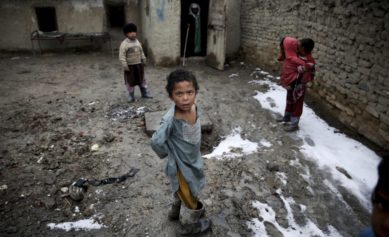Out of the 48 countries in sub-Saharan Africa, nearly half of them—22—are considered middle-income countries based on the per capita income of their citizenry—a number that grows with each year as the African continent continues to be the fastest growing region in the world.
Granted, the standard set by the World Bank for “middle income” is just $1,000 a year, an amount far below the level considered middle class in the United States. But considering where many African economies were just a decade ago, the growth on the continent is impressive. Since the beginning of the 21st century, Africa has seen a growth average of 5-6 percent GDP per year.
Unfortunately even relatively high income by African standards doesn’t ensure that the residents will experience a high standard of living—Gabon has more than $10,000 per capita income but still has one of the lowest immunization rates in Africa.
For comparison sake, middle-income status means membership in the same group as, say, Indonesia, Mexico and China, giving you access to global capital markets.
Among the most mature economies are Botswana, Cape Verde, South Africa, Mauritius, Namibia, Seychelles and Swaziland, with some 60 million people. These are Africa’s better-off economies, located in Southern Africa or small-island states.
Next are the group known as commodity MICs: Angola, Congo (Brazzaville), Equatorial Guinea, Gabon, Ghana, Nigeria, Zambia, Sudan. These countries, home to about 260 million people, are rich in natural resources, mainly oil. By most social standards these countries remain very poor.
Next are new MIC,s which include Cameroon, Côte d’Ivoire, Djibouti, Lesotho, Mauritania, Sao Tome & Principe, and Senegal. These countries represent a broad mix of economies representing 60 million people.
Lastly are the next generation of MICs, countries — home to 110 million people today — that should reach Middle-Income Status by 2025 if past trends continue or political interruptions subside: Chad, Kenya, Mozambique, Rwanda, Sierra Leone and Zimbabwe. With this group of new MICs, more than half of Africans would live in middle income economies, and many other countries are just behind, especially in Eastern Africa.
To realize their potential, these countries will need sound macro-management and political stability, in addition to addressing the challenges of structural transformation, employment, physical and human capital deficits, all of which have their roots in governance.
“But if Africans and African policy-makers could correct the macroeconomic policy failures of the past, they should overcome the remaining government failures to experience sustained growth and poverty reduction in the future,” according to writer Wolfgang Fengler on africareview.com.


